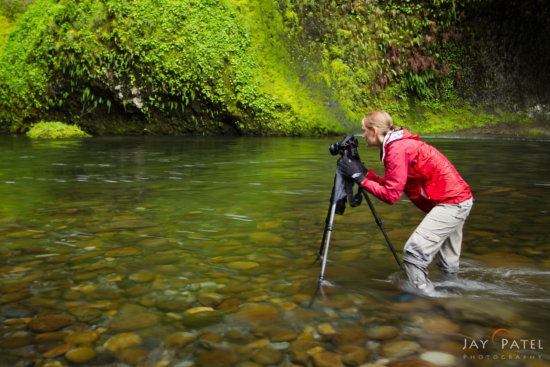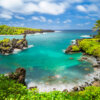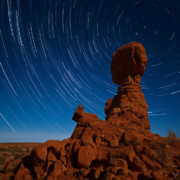Essential Equipment for Long Exposure Photography
One of the first creative techniques that many aspiring landscape photographers explore is long exposure photography. Using a slow shutter speed can transform ordinary scenes into something extraordinary—whether it’s smoothing out moving elements, capturing light trails, or emphasizing motion in clouds. While the concept may sound simple, achieving the desired effect takes planning and practice.
The good news is that you don’t need expensive equipment to get started. With the right long exposure photography gear—such as a sturdy tripod, photography filters, and sometimes a remote release—you can begin experimenting with different effects that add drama and atmosphere to your images.
Below, you’ll find the most essential photography equipment for long exposure photography, along with practical tips to help you capture dynamic, creative landscapes.
Essential Gear for Long Exposure Photography
Camera
The most important piece of gear is a camera that allows full manual control. You need a DSLR camera, mirrorless camera, or even a smartphone with manual exposure apps to adjust shutter speed. Halide, ProShot, and Slow Shutter Cam are examples of apps that give you control over shutter speed, allowing you to capture creative long exposure effects with your smartphone.
For DSLR or mirrorless cameras, shooting in manual mode for long exposure photography is highly recommended. This way, you can decide on shutter speed, aperture, and ISO settings without the camera interfering. Manual mode ensures full creative control, especially when photographing waterfalls, streams, or seascapes.
Sturdy Tripod for Sharp Long Exposures
No matter what camera you use, you’ll need a sturdy tripod for long exposure photography. The smallest vibration can ruin your shot when using shutter speeds of one second or longer. A lightweight tripod can work if you are on solid ground with little wind, but if you are shooting long exposure seascapes with waves or windy conditions, you’ll want a heavy-duty tripod that keeps the camera stable.
At Folly Beach Pier in South Carolina, I used a 45-second long exposure for seascape photography to smooth out midday ocean waves. The extended shutter speed not only softened the water but also revealed subtle reflections that are usually hidden by constant motion. To achieve this effect in bright conditions, a neutral density filter for long exposure photography is essential.
If you’re photographing from within the water, push the tripod legs firmly into the sand or riverbed for stability. This prevents movement caused by rushing waves or currents.
Remote Release or Self-Timer
A remote shutter release for long exposure photography is extremely helpful to avoid camera shake. Without one, you can use your camera’s 2–5 second self-timer to reduce vibrations caused by pressing the shutter button.
However, if you’re photographing waves or fast-changing motion, the timing becomes critical. In these cases, a remote release gives you more control and ensures you can capture water movement at the exact moment you want.

Long exposure photography captured using a remote release from Boneyard Beach, Big Talbot Island, Florida
On Amelia Island, Florida, I wanted to capture a dramatic seascape with incoming waves. Using a wide-angle lens and one-second shutter speed for long exposure photography, I was able to emphasize the movement of the water while keeping the surrounding landscape sharp. A sturdy tripod for long exposure seascapes is critical here, especially when working in sand or shallow water. Pushing tripod legs deep into the sand helps prevent unwanted motion blur, and experimenting with both incoming and receding waves produces very different results in the final image.
Photography Filters for Long Exposure
Two filters are especially useful for capturing smooth flowing water with long exposure:
- Circular Polarizer Filter – Helps reduce glare, enhance colors, and slightly darken the image, allowing a longer shutter speed. It is one of the best filters for waterfall and stream photography.
- Neutral Density (ND) Filters – Essential for daytime long exposures, ND filters reduce the amount of light entering your lens so you can use shutter speeds of several seconds or even minutes. This is key for capturing ocean waves, waterfalls, or rivers in bright daylight conditions.
While photographing the Virgin River Narrows in Zion National Park, the low light allowed me to use a five-second shutter speed for long exposure landscape photography without additional filters. This created a smooth, flowing effect in the river while keeping surrounding canyon walls sharp. The example highlights that you don’t always need multiple neutral density filters for long exposure photography—sometimes the natural conditions of the location provide the perfect exposure time.
Workflow for Capturing Flowing Water
The shutter speed you select is the single biggest factor in determining how flowing water appears in your image. A faster shutter speed may freeze motion and show detail in splashing water, while a slower shutter speed will blur movement into smooth, silky textures. For example, photographing waterfalls and streams often works well with shutter speeds around 1/4 to 1/2 second, which create a soft, flowing look without losing too much detail. Ocean waves benefit from longer exposures between 1 and 5 seconds, adding a mist-like atmosphere to the scene. If you want to create a more abstract or ethereal effect, super long exposures of 30 seconds or more can completely smooth out water, which is especially effective for minimalist seascape photography. Understanding these shutter speed choices is essential, because they not only change how your photo looks, but also influence the mood and storytelling within your landscape images.
Here’s a practical step-by-step long exposure workflow for capturing flowing water that beginner and intermediate photographers can follow:
- Scout the location – Look for compelling compositions with moving water, such as waterfalls, mountain streams, or shoreline waves.
- Set up your tripod – Place it on solid ground, or push the legs firmly into sand or soil if you’re near water for added stability.
- Compose your shot – Use live view to fine-tune framing and check edges for distractions.
- Add filters if needed – A circular polarizer reduces glare and boosts colors, while ND filters are critical for extending shutter speed in bright daylight.
- Switch to manual mode – Start with ISO 100, choose a narrow aperture (f/8–f/16), and adjust shutter speed based on the speed of the water and the desired effect.
- Begin with test shots – Try 1/4 to 1/2 second for waterfalls and streams, or longer shutter speeds for waves and seascapes, and evaluate the effect.
- Adjust shutter speed – Lengthen the exposure to blur more motion for a dreamy look, or shorten it if you want to preserve texture and energy in the water.
- Use a remote release or self-timer – Prevent vibrations by triggering the shutter without touching the camera.
- Review and refine – Zoom in on your images to check sharpness in non-moving elements, then fine-tune exposure, focus, or filter adjustments.
- Experiment with timing – Capture both incoming and receding waves, or different water currents, to create a variety of visual effects.
By following this workflow, you’ll not only understand how to use long exposure photography for flowing water, but also why specific shutter speeds and techniques create different moods. The more you experiment, the better you’ll become at shaping water movement into a powerful storytelling element in your landscape photography.
Conclusion
By combining the right equipment with thoughtful experimentation, long exposure photography opens up an entirely new way of seeing the world through your camera. Whether you’re capturing waterfalls, moving clouds, car light trails, or starry skies, adjusting your shutter speed and using filters gives you the ability to shape motion and mood in your images.
The more you practice, the more creative possibilities you’ll discover—turning everyday scenes into photographs filled with atmosphere, depth, and artistry.















